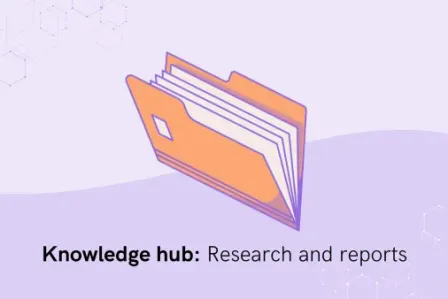This report presents the findings of KüberPähkel 2024, a web-based testing initiative conducted between October and November 2024, assessing the digital safety, cybersecurity, and Artificial Intelligence (AI) awareness of 8036 Estonian students in grades 4–9. The testing assessed students’ knowledge of terminology (e.g., MFA, DDoS) and their ability to navigate complex digital situations. Results indicate that while formal education (school) is the most influential information source (66%), awareness of official resources (like Targalt internetis, Lasteabi) is significantly higher than actual usage. Students who performed successfully on the test were found to rely on more reliable, structural information sources and were more confident in their knowledge, actively utilizing AI tools for learning. Conversely, less successful students often relied on less trustworthy channels (e.g., internet acquaintances) and were more prone to passively copying AI-generated answers for homework. The report recommends integrating digital safety and AI ethics practically across the curriculum, utilising playful methods like the Spoofy game, and offering differentiated support to address the varying needs and confidence levels of learners.
(Source: Report)
Methodology
The KüberPähkel initiative used individual, web-based testing aimed at students in grades 4–9, and was conducted between 1 October and 15 November 2024. General education schools were invited to participate. A total of 8036 students from 169 schools in Estonia took part. The test was available in Estonian and Russian. It consisted of 29 questions covering themes such as AI, passwords, computation, cryptography, and case descriptions; students were given 30–45 minutes to complete it. The subsequent analysis included a focused comparison between the students with the top 21% results (successful) and those with the bottom 21% results (less successful)
Country or region of researched population
Estonia
Citation
Lorenz, B., Toom, H., Kirna, C., Lust, M., & Kits, R. (2025). KüberPähkel 2024 ÕIGE ARUANNE: Cybersecurity Testing of 4th–9th Grade Students (Report updated June 2025). TalTech IT-didaktikakeskus.

This report presents the findings of KüberPähkel 2024, a web-based testing initiative conducted between October and November 2024, assessing the digital safety, cybersecurity, and Artificial Intelligence (AI) awareness of 8036 Estonian students in grades 4–9. The testing assessed students’ knowledge of terminology (e.g., MFA, DDoS) and their ability to navigate complex digital situations. Results indicate that while formal education (school) is the most influential information source (66%), awareness of official resources (like Targalt internetis, Lasteabi) is significantly higher than actual usage. Students who performed successfully on the test were found to rely on more reliable, structural information sources and were more confident in their knowledge, actively utilizing AI tools for learning. Conversely, less successful students often relied on less trustworthy channels (e.g., internet acquaintances) and were more prone to passively copying AI-generated answers for homework. The report recommends integrating digital safety and AI ethics practically across the curriculum, utilising playful methods like the Spoofy game, and offering differentiated support to address the varying needs and confidence levels of learners.
(Source: Report)
Methodology
The KüberPähkel initiative used individual, web-based testing aimed at students in grades 4–9, and was conducted between 1 October and 15 November 2024. General education schools were invited to participate. A total of 8036 students from 169 schools in Estonia took part. The test was available in Estonian and Russian. It consisted of 29 questions covering themes such as AI, passwords, computation, cryptography, and case descriptions; students were given 30–45 minutes to complete it. The subsequent analysis included a focused comparison between the students with the top 21% results (successful) and those with the bottom 21% results (less successful)
Country or region of researched population
Estonia
Citation
Lorenz, B., Toom, H., Kirna, C., Lust, M., & Kits, R. (2025). KüberPähkel 2024 ÕIGE ARUANNE: Cybersecurity Testing of 4th–9th Grade Students (Report updated June 2025). TalTech IT-didaktikakeskus.
- artificial intelligence (AI) online safety


